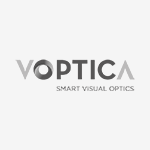Purpose: To evaluate the quality of vision and depth of focus induced by controlled amounts of negative spherical aberration in patients implanted bilaterally with lightadjustable intraocular lenses.
Design: Prospective nonrandomized clinical trial.
Methods: Seventeen patients were implanted and treated with appropriate spatial irradiance light profiles. One eye was set for emmetropia, and the fellow eye received an additional aspheric light treatment to induce controlled amounts of negative spherical aberration. We used a Hartmann-Shack sensor to measure the eye’s refraction and aberrations for a 4-mm pupil diameter. Decimal visual acuity (VA) was measured using a micro-display placed at 10 m, 60 cm, 40 cm, and 30 cm.
Results: Eyes treated with aspheric profiles were divided into 2 groups depending on the final amount of induced negative spherical aberration: low [L0.05, L0.10 mm] and high [L0.13, L0.23 mm]. In both groups, the mean uncorrected decimal VA at 60 cm was over 0.90. In the first group, distance VA was 0.97 ± 0.16, but in the second group it was lower (0.76 ± 0.16). As expected, the VA for nearer distances is higher in the eyes with a larger magnitude of spherical aberration (P value < .01): 0.94 ± 0.10 and 0.73 ± 0.16 at 40 and 30 cm, respectively, in comparison with 0.71 ± 0.15 and 0.50 ± 0.14. Binocular summation with the fellow eye, adjusted for emmetropia, produces an excellent binocular distance VA (>1.10) in both groups.
Conclusions: Controlled amounts of negative spherical aberration and defocus can be induced in eyes implanted with adjustable intraocular lenses to enhance near vision.
Search
Categories
Archives
- July 2024 (8)
- June 2024 (1)
- October 2023 (2)
- July 2023 (5)
- June 2023 (1)
- July 2022 (10)
- July 2021 (5)
- March 2021 (2)
- October 2020 (36)
- September 2020 (122)
- August 2020 (10)
- July 2020 (38)
- April 2020 (1)
- April 2018 (1)
- September 2017 (2)

Extended Depth of Focus With Induced Spherical Aberration in Light-Adjustable Intraocular Lenses
- Voptica
- VAO Publications
Journal:
American Journal of Ophthalmology
Year:
2014
Link:
Authors:
Eloy A. Villegas, Encarna Alcon, Sandra Mirabet, Inés Yago, José M. Marín, Pablo Artal

